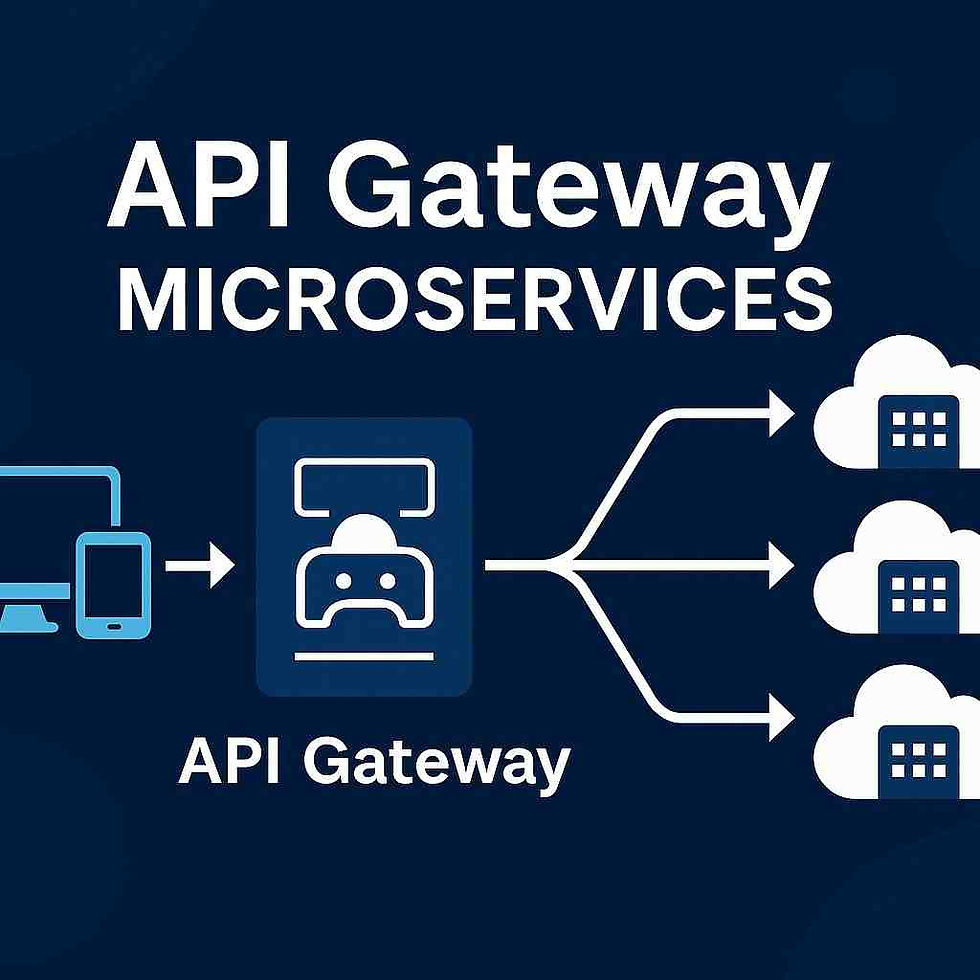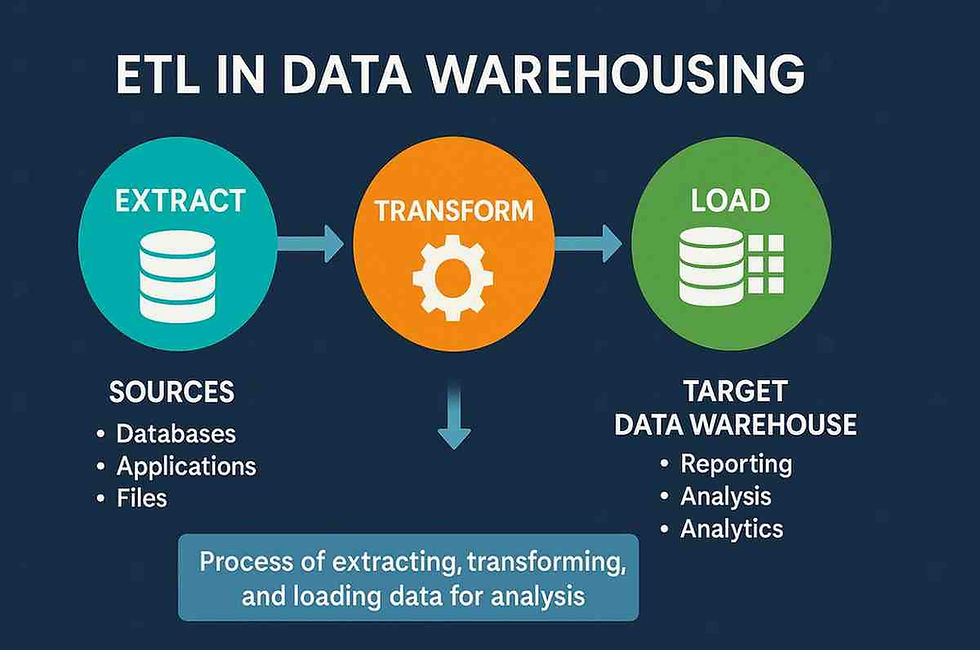Guide to Integrating GitHub and Jenkins for CI/CD Success
- Gunashree RS
- Sep 21, 2024
- 7 min read
In the world of continuous integration (CI) and continuous deployment (CD), GitHub and Jenkins are two of the most powerful tools for automating the development lifecycle. GitHub allows you to manage code and collaborate on projects, while Jenkins provides automation for building, testing, and deploying your application. The real power, however, comes when these two tools are integrated, allowing Jenkins to automatically trigger builds, run tests, and update the status of those builds in GitHub pull requests.
However, setting up this integration is not always straightforward. While other CI platforms like Travis and CircleCI have native GitHub integration, Jenkins requires a bit more configuration. Fortunately, once you have Jenkins and GitHub working together, the benefits are immense—automated builds, testing, and feedback all within the pull request interface in GitHub.
In this comprehensive guide, we’ll walk you through every step of integrating GitHub and Jenkins, from setting up webhooks to configuring Jenkins for automatic build status updates in GitHub pull requests. By the end, you'll have a seamless workflow that optimizes your development process and saves you countless hours.

Why Integrate GitHub and Jenkins?
Integrating GitHub with Jenkins enhances the development workflow by automating various tasks such as building, testing, and deploying code every time a change is pushed to a repository. Here's why this integration is essential:
Key Benefits:
Automation of Repetitive Tasks: Automated builds and tests eliminate the need for manual intervention, improving team productivity.
Instant Feedback: Developers get immediate feedback on their code changes directly in GitHub, improving code quality.
Faster CI/CD Pipelines: Automated workflows enable faster releases with fewer errors, allowing your team to focus on building new features.
Improved Collaboration: GitHub pull requests and Jenkins builds are connected, so everyone on the team can easily see the status of the project.
Together, GitHub and Jenkins form the backbone of many successful DevOps practices, enabling continuous integration, testing, and deployment without friction.
The Big Picture of GitHub and Jenkins Integration
To understand the process, let's break it down into a series of interactions between GitHub and Jenkins. Essentially, GitHub sends notifications (via webhooks) to Jenkins when a specific event happens, like a new commit or pull request. Jenkins then responds by triggering a build and running automated tests. The result is reported back to GitHub, where the status of the build is displayed within the pull request interface.
Here’s a simplified flow:
A developer pushes code to GitHub.
A webhook notifies Jenkins.
Jenkins starts a build.
Jenkins runs tests and returns the build status to GitHub.
GitHub shows the status of the build directly in the pull request.
Now, let’s dive into how to set up this integration.
Step 1: Setting Up GitHub for Jenkins Integration
1.1 Create a GitHub Repository
Before setting up Jenkins, you need a GitHub repository. If you don’t have one yet, create it by following these steps:
Log into your GitHub account.
Click on the "+" icon in the top-right corner and select New Repository.
Name your repository and click Create repository.
1.2 Configure GitHub Webhooks
To enable GitHub to notify Jenkins when a new event happens, you need to configure webhooks. Webhooks are HTTP requests sent from GitHub to a specific endpoint when specific events occur (e.g., a push to the repository).
Here’s how to set up a webhook:
Navigate to the Settings tab of your GitHub repository.
On the left sidebar, click Webhooks.
Click Add Webhook.
In the Payload URL, enter the URL of your Jenkins server followed by /github-webhook/. For example, http://your-jenkins-server.com/github-webhook/.
Set Content type to application/json.
Choose the events that trigger the webhook. Typically, you can select "Just the push event" or "Let me select individual events."
Click Add Webhook to save the configuration.
Once this is set, GitHub will notify Jenkins anytime there's a push or pull request to the repository, ensuring Jenkins automatically triggers a build.
Step 2: Setting Up Jenkins for GitHub Integration
Now that GitHub is configured, let’s move to Jenkins.
2.1 Install Required Jenkins Plugins
Jenkins requires a few plugins to work smoothly with GitHub. Follow these steps to install the necessary plugins:
Open your Jenkins dashboard.
Navigate to Manage Jenkins and click on Manage Plugins.
Under the Available tab, search for the following plugins:
GitHub Integration Plugin
Git Plugin
Hudson Post Build Task Plugin
Check the box next to each plugin and click Install without restart.
Once installed, these plugins will allow Jenkins to communicate with GitHub, fetch code, and update the build status in pull requests.
Step 3: Generate a GitHub Access Token
For Jenkins to update the build status on GitHub, it needs an authentication token. This token allows Jenkins to interact with the GitHub API securely.
Here’s how to generate an access token:
Go to GitHub and click on your profile icon in the top-right corner.
Select Settings from the dropdown menu.
In the sidebar, click on Developer settings.
Choose Personal access tokens.
Click on Generate new token.
Give the token a name, and under repo, check the repocheckbox. This permission allows Jenkins to update the status of pull requests.
Click Generate token and copy the token somewhere safe—you’ll need it later.
Step 4: Configuring Jenkins Jobs
Now that Jenkins has the required plugins and access to your GitHub repository, the next step is to configure Jenkins jobs to run your builds.
4.1 Creating a Jenkins Job
In the Jenkins dashboard, click New Item.
Name your job and select Freestyle project or Pipeline depending on your needs.
In the Source Code Management section, choose Git and paste the GitHub repository URL.
Under Branches to build, specify the branch (e.g., main or develop) that Jenkins should build.
4.2 Configuring Build Triggers
To make Jenkins respond to GitHub events, configure a build trigger:
Scroll to the Build Triggers section.
Check the GitHub hook trigger for GITScm polling. This tells Jenkins to trigger a build whenever the webhook sends a notification.
Step 5: Post-Build Actions to Update GitHub
To update the build status in GitHub pull requests, Jenkins needs to notify GitHub whether the build succeeded or failed.
5.1 Install Hudson Post Build Task Plugin
This plugin allows you to add post-build tasks that run based on specific conditions. For example, if the build succeeds, Jenkins will send a "success" status to GitHub. If it fails, Jenkins will send a "failure" status.
5.2 Configuring Post-Build Tasks
In the Jenkins job configuration, scroll down to Post-build Actions.
Choose Post-build Task.
Set the log condition to look for the words "SUCCESS" or "FAILURE" in the build output.
For each condition, add a script using the curl command to notify GitHub of the build result.
Here’s an example of a success notification:
bash
curl "https://api.github.com/repos/<GitHubUserName>/<RepoName>/statuses/$GIT_COMMIT?access_token=<Your_GitHub_Token>" \
-H "Content-Type: application/json" \
-X POST \
-d '{"state": "success", "context": "continuous-integration/jenkins", "description": "Jenkins Build Passed", "target_url": "http://your-jenkins-server/job/<JenkinsProjectName>/$BUILD_NUMBER/"}'And for a failure notification:
bash
curl "https://api.github.com/repos/<GitHubUserName>/<RepoName>/statuses/$GIT_COMMIT?access_token=<Your_GitHub_Token>" \
-H "Content-Type: application/json" \
-X POST \
-d '{"state": "failure", "context": "continuous-integration/jenkins", "description": "Jenkins Build Failed", "target_url": "http://your-jenkins-server/job/<JenkinsProjectName>/$BUILD_NUMBER/"}'Make sure to replace <GitHubUserName>, <RepoName>, <Your_GitHub_Token>, and <JenkinsProjectName> with the appropriate values.
Conclusion
Integrating GitHub with Jenkins is a game-changer for automating your CI/CD pipelines. It enhances team collaboration, automates repetitive tasks, and provides instant feedback directly in GitHub pull requests. While setting up the integration takes some effort, the result is a powerful and efficient workflow that can drastically improve your team’s productivity and software quality.
By following this step-by-step guide, you now have all the tools and knowledge necessary to integrate GitHub with Jenkins and streamline your development process.
Key Takeaways
GitHub and Jenkins integration automates builds, tests, and deployment processes.
Webhooks are essential for triggering Jenkins builds from GitHub.
Personal access tokens enable secure communication between Jenkins and GitHub.
Post-build scripts allow Jenkins to update the GitHub pull request status with success or failure messages.
Proper integration enhances team collaboration, speeds up releases, and improves code quality.
Hudson Post Build Task plugin simplifies running post-build tasks like updating GitHub statuses.
Automated feedback in GitHub pull requests helps developers identify issues early.
FAQs
1. What is the purpose of integrating GitHub with Jenkins?
Integrating GitHub with Jenkins automates the build, testing, and deployment processes while providing real-time feedback on the status of code changes directly in GitHub pull requests.
2. What is a GitHub webhook in Jenkins?
A GitHub webhook is a method used by GitHub to send notifications to Jenkins when specific events (like a push or pull request) occur. These webhooks trigger Jenkins to run automated builds and tests.
3. How do I generate a GitHub access token for Jenkins?
To generate a GitHub access token, go to your GitHub account settings, navigate to Developer settings > Personal access tokens, and generate a new token with repo
permissions.
4. Can Jenkins update the status of a GitHub pull request?
Yes, by using the Hudson Post Build Task plugin and calling the GitHub API, Jenkins can update the status of a pull request with either success or failure messages after running a build.
5. What plugins are needed for Jenkins to work with GitHub?
You need the GitHub Integration Plugin, Git Plugin, and Hudson Post Build Task Plugin to integrate Jenkins with GitHub effectively.
6. How does Jenkins know which branch to build?
Jenkins knows which branch to build based on the configuration in the Jenkins job setup. You specify the branch in the Source Code Management section of the job.
7. Can I use Jenkins to trigger builds for specific events in GitHub?
Yes, Jenkins can trigger builds based on specific GitHub events, such as pushes to a branch or pull requests, by configuring webhooks in GitHub.
8. How does Jenkins use curl to update the GitHub status?
Jenkins uses the curl command to send a POST request to the GitHub API, updating the status of the commit in a pull request with the result of the build (success or failure).




Comments